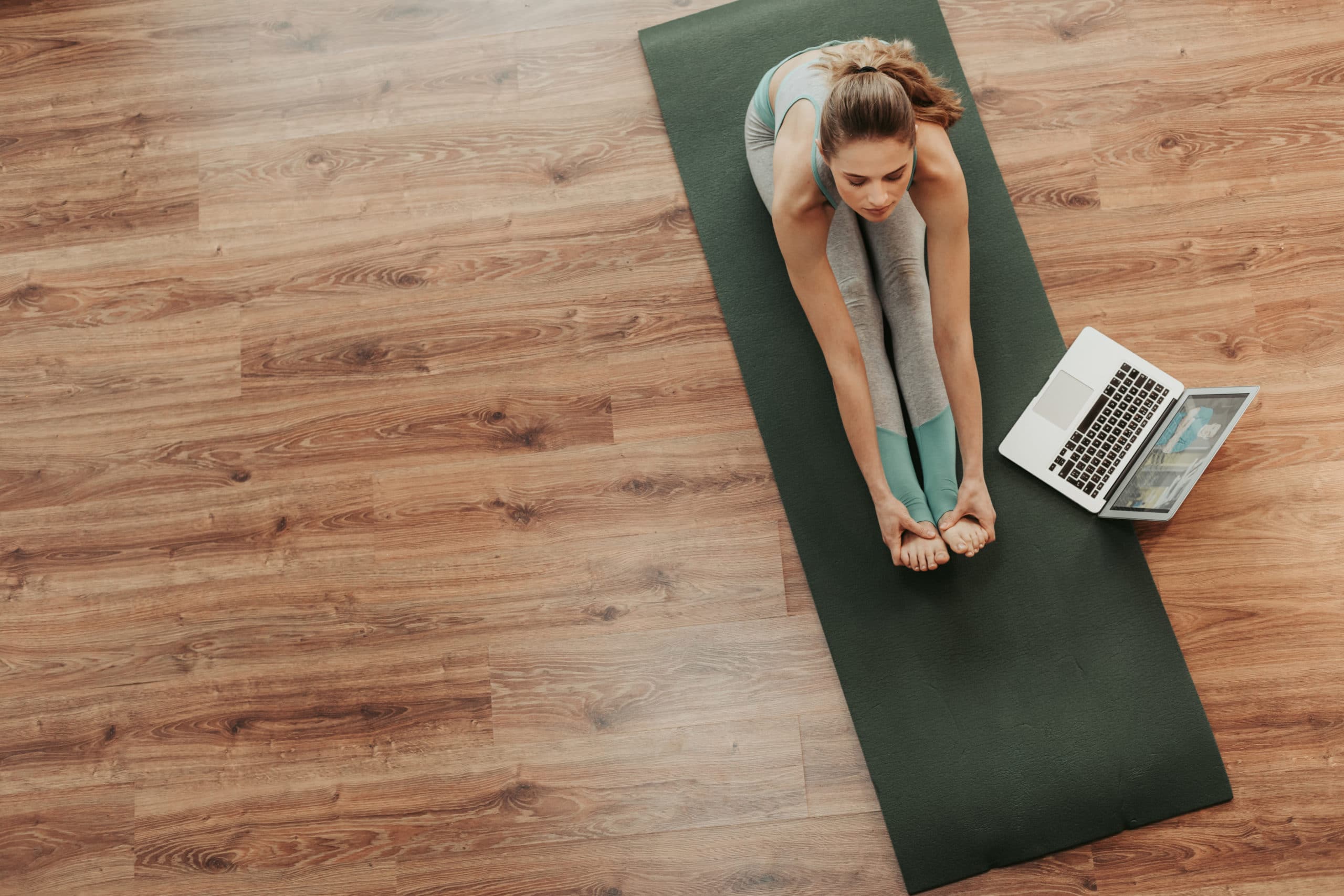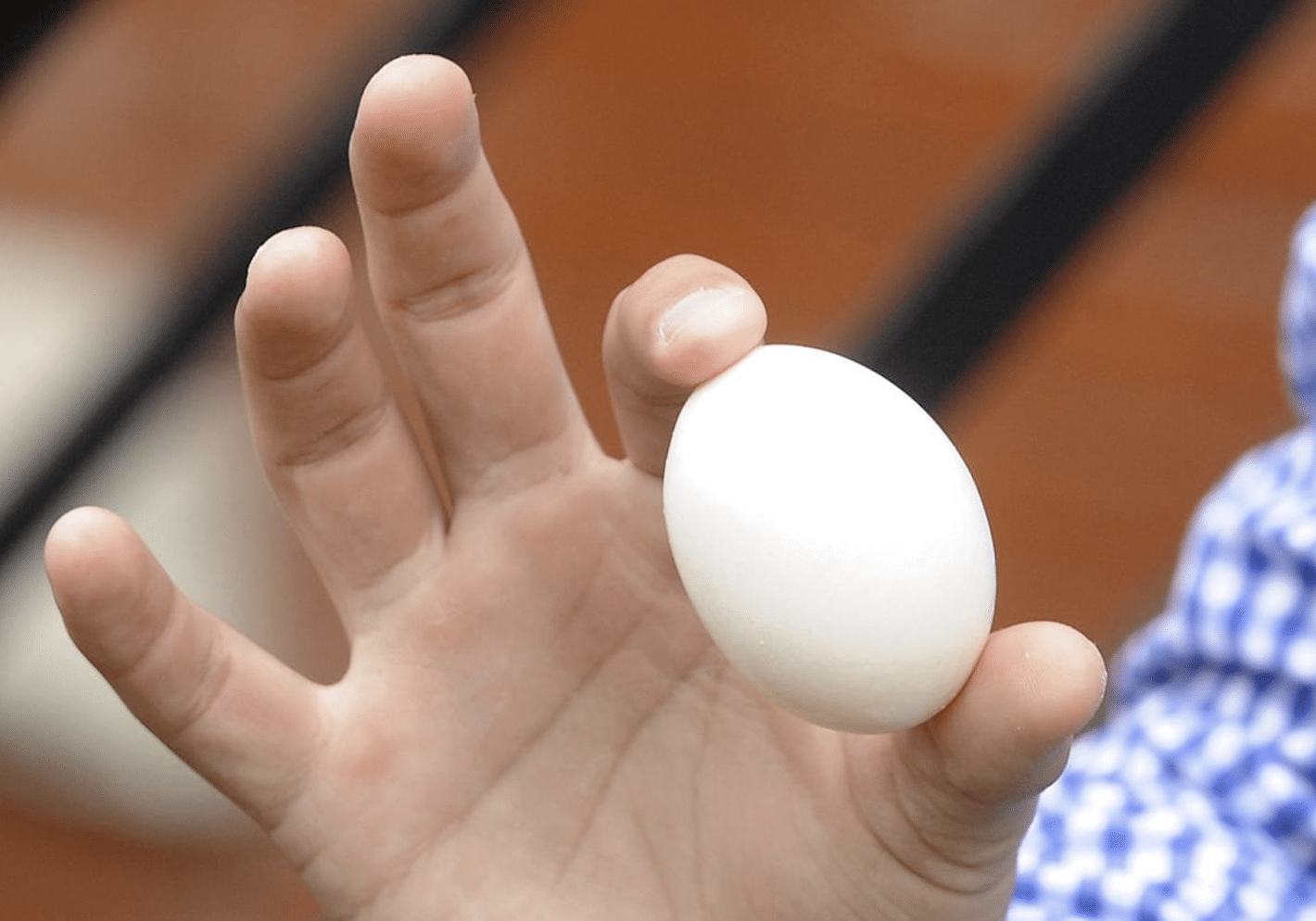Shopkick is proud to announce several new partnerships and features that further develop our ability to engage with today’s shoppers. In the midst of the current health and economic crisis, we remain focused on helping our partners connect with shoppers wherever and whenever they shop. Continue reading “Shopkick’s anytime, anywhere influence”
Author: shopkick
Four Kids Crafts for Earth Day
It’s Tuesday, which means we welcomed first grade teacher, Mrs. Lamb, back to Facebook Live! Mrs. Lamb shared one of her favorite holidays is tomorrow – Earth Day. And, she’s still planning to celebrate at home with her kids and over Zoom with her students. Below, we’re detailing the four simple crafts and experiments you can do from home with materials you likely already have on hand.
Bug Hotel:
The bug hotel is exactly like it sounds – a fun spot where bugs will want to inhabit (outside, of course!). Here’s how to make one:
- Cut off the top and bottom of a plastic bottle. A soda or water bottle is perfect!
- Go on a nature walk and pick up items like sticks, flowers, leaves, and moss.
- Thread your items into your bottle until it’s full.
- Poke two holes in your bottle, thread twine through the holes, and hang your habitat outside on a tree.
For extra learning, ask your student to journal about the experience, make a hypothesis about the varieties of bugs that will like the hotel you’re creating, and take photos of your hotel in progress.
Earth Day Headband:
Mrs. Lamb and her students love creating Earth Day headbands to wear throughout the day! It’s a fun way to kick off the day with a craft and plenty of meaningful conversation about reducing, reusing, and recycling. Here’s how to make one:
- Download the PDF from Smitten with First.
- Color your earth, glue all necessary pieces, and complete the prompt about how you reduce, reuse, and recycle.
- Glue all pieces to a headband and wear it throughout the day!
For extra learning, talk with your student about the areas of the earth they’re coloring and why they’re choosing specific colors. See if you can think of new ways to reduce, reuse, and recycle. Chat with friends about Earth Day!
Crayon Planter:
If you have old crayons hiding in drawers, this project is a great way for you to reuse and recycle your materials. Plus, you will have a unique and fun planter once it’s complete. Here’s how to make one:
- Gather old crayons and remove all of the paper on the outside.
- Rinse out a can.
- With a hairdryer on high heat, hold a crayon on the outside of the can and watch as the wax melts onto the can. Repeat until the can is covered.
- Add soil and seeds – your planter is complete!
For extra learning, explore why crayons melt when a hairdryer is used and talk about what you might grow in your planter. Mrs. Lamb shared she’s growing strawberries!
Ecosystem:
Mrs. Lamb’s final Earth Day project is one of her favorites – an ecosystem! This project is simple, but the results can be seen for days and weeks on end as your seeds continue to grow. Here’s how to make your own ecosystem:
- Collect two soda bottles (you may want to have three ready just in case)
- Cut off the top of one bottle and the bottom of another
- Flip one bottle upside down and nest it inside the other (the top of the bottle where the cap would normally be should now be inside of the other bottle)
- Fill the top bottle with a layer of rocks followed by layers of soil. Mrs. Lamb’s kids added moss in between their rocks and soil.
- Plant seeds in the soil.
- Water your seeds and watch as any additional water trickles through the top bottle and lands in the bottom bottle. Your ecosystem is ready to thrive!
For extra learning, continue to water your ecosystem and track its progress. You will notice the seeds beginning to sprout, and overtime the roots will poke through the bottle’s opening and flow into the bottom bottle where the water is collecting. You will find you will need to water your ecosystem less and less because the roots will be able to collect their own water.
Make sure to catch Mrs. Lamb’s Earth Day Facebook Live, and have fun celebrating the 50th anniversary of this great holiday. We’ll see you back on Facebook for Mrs. Lamb’s next session on Thursday!
5 Trendy Workouts to Try at Home
Aside from staying home during the current pandemic, one of the best things we can do for our mental and physical wellbeing is to stay active. Spending 10, 30, 45, or 60 minutes a day invested in a workout has the potential to make you feel strong and accomplished because you’re sweating and moving your body. Thanks to the known benefits and in an effort to encourage us to continue (or start!) our workout routines, many gyms and fitness studios are now posting their classes online. So, if you have been wanting to try out a trendy workout, like Peloton, Barre3, or Orangetheory, keep reading because we’re sharing five trendy workouts you can try for home!
1. Peloton App
You’ve likely heard of Peloton and their bikes, but did you know they also have an app filled with plenty of other workouts? Try out yoga, strength training, walking, running, cycling (of course), and more via the app with any of their trained instructors. Classes range from quick 10 minute sessions to hour long classes you can participate in live or at your leisure (everything is saved). At the time we’re publishing this post, Peloton is currently offering a 90-day free trial.
2. Obe Fitness
Obe Fitness is known for their 28 minute workouts, and they recommend alternating between cardio (SWEAT), strength (STRENGTH), and yoga (FLOW) classes throughout the week. Because the sessions are short and known for their high energy feeling, we won’t be surprised if you achieve their recommended goal of 5 classes/week. Try a free trial to see what you think before joining and paying for a monthly membership.
3. Shopkick
Have you worked out with us yet? We have been launching new workout videos on Mondays and Wednesday in the app and also on Facebook Live! Mondays is devoted to mindfulness, so join us to practice yoga and stretch with Cat. On Wednesday, join us as we try a different workout each week. We’ve done Zumba, stretching, and core work so far with Nikki!
4. Orangetheory
If you have not yet tried Orangetheory, you likely have a friend who is a big fan. Typically, Orangetheory workouts are an hour long, and they’re designed to work on “endurance, strength, and power”. Currently, the team behind Orangetheory is launching daily workouts for you to do at home with most lasting for 30 minutes. Everything is free through the Orangetheory At Home program!
5. Barre3
Barre3 combines strength training together with ballet, and the full-body workouts are known to be challenging. Choose your level and stream workouts online during a time that suits your schedule. Currently, you can enjoy a 15-day free trail and some items you may wish to purchase to use during your workouts are discounted.
Join us on Facebook as we stay active together!
At Home Science Experiment: Egg Drop
First grade teacher Mrs. Lamb was live again yesterday on Facebook, and we’re back to recap her session! This time, she dove into science after receiving requests to explore this fun subject. And, after chatting with a friend, she decided to explore the egg drop. Many of us remember the day when we had to create a structure that would protect an egg from a fall, and Mrs. Lamb introduced her kids to the experiment first and now you’re invited to take part too.
The steps to try this experiment at home are simple!
How to Do an Egg Drop Experiment at Home:
- Explain the concept of dropping an egg to your student. Older kids may have learned about force in their science classes, which is the ultimate lesson. However, there is plenty of creativity to be had for younger students too.
- Ask your student to create a structure they think can withstand a drop from a second or third story window or even from a lower down ladder. Encourage them to get creative and think about what might protect their egg during a fall. The key thing Mrs. Lamb noted was she encouraged her kids to use anything that could be recycled, which is a great idea in general and also in celebration of Earth Day.
- Encourage your student to decorate their egg! Mrs. Lamb’s kids got creative and drew on their eggs, which we thought was such a fun touch. They also named them for even more personalization.
- Prepare the egg for the drop! Place it inside the structure, make sure it’s secure, then head to the spot where you will drop it.
- Mrs. Lamb’s kids waited in the yard outside where they took videos of their eggs dropping in slow motion. The videos are fantastic!
- Open the structures to see if your egg survived the fall. The goal is for it to be intact.
After taking a peek at their eggs post-fall and reviewing why certain structures worked while others didn’t, Mrs. Lamb’s kids asked to try again. One experiment turned into a complete activity for Mrs. Lamb and her family, and we think you and your family will have fun too!
Will you take part in the egg drop experiment? If you do, make sure to share it with us on Facebook. Stay tuned for next week because Mrs. Lamb will be back on Tuesday to share even more ideas live!
The most effective customer loyalty programs for retail
How to Support Your Community During COVID-19
We all have favorite small businesses we enjoy supporting whether they’re located in our hometowns or online. Many of the businesses we are thrilled to support during other times throughout the year are the same businesses that are being hit the hardest now during the coronavirus quarantine. Though we may be inside and at home, there are still plenty of simple and easy things we can do to support our communities. Here are five of our ideas:
1. Contribute to Charity Campaigns
Online campaigns are launching to support small business employees who cannot work during COVID-19, and we have been happy to support them during this time. When many of us donate $5 or $10 to these campaigns, those amounts add up to much more and fast!
2. Order Takeout
We may not be able to eat in person at our favorite local restaurants, but many are still offering takeout. So, order online and turn to Uber Eats to bring you your delivery. P.S: Make sure to use Shopkick if you order with Uber Eats because you’ll earn kicks!
3. Purchase a Gift Card
A gift card can go a long way for a small business in your community. Your purchase provides cash flow for the business now, and it offers a promise that you’re going to return once they can open their doors again.
4. Post on Social Media
Posting about your favorite shops, boutiques, and restaurants on social media is a quick, easy, and free way to show your support! Consider sharing menu items you enjoy from local restaurants or items you have purchased from local shops. Everyone enjoys visuals!
5. Shop Small
If you do need to purchase something online, try supporting a smaller shop or boutique! Many have online stores so their items are always available, and now shopping online is the best way to pick up new items while still keeping your social distance.
How are you supporting your community? Chime in on Facebook!
The future of retail: How brands can engage millennial consumers
When wondering how they can engage millennial consumers, brands should consider the following: Continue reading “The future of retail: How brands can engage millennial consumers”
How to Homeschool: Two Easy Crafts for Preschoolers
Mrs. Lamb was back on Facebook Live yesterday, and this time she answered your question about how to encourage preschool age students to be creative. Throughout her broadcast, Mrs. Lamb explained how to do two different crafts with young kids between the ages of three and seven. We loved seeing the results of her mosaic art and dot art projects, and we’re excited to share more about each below!
Mosaic Art:
Supplies:
- A picture either hand drawn or printed onto a piece of paper (a coloring book picture could work too!)
- Construction Paper
- Glue Stick
Why It’s Important:
This project encourages preschoolers to work on their fine motor skills because they will need to rip small pieces of paper. The skills they are exercising through this craft are the same skills they will use when they begin to work on their handwriting. That’s why projects like this one are important! Students can also learn about colors, math (you can ask them to count how many pieces of paper are needed to fill in each section), and staying within the lines.
Directions:
- Draw or print the outline of an object onto a piece of 8”x11” paper. The outline is important because your student will be filling the interior with paper.
- Tear small pieces of construction paper
- Beginning with the large sections, glue each piece of construction paper onto the larger paper within the section where your student would like it to be placed. The small pieces of paper should overlap.
- Repeat steps 2 + 3 until the outline is filled in.
- Hang your preschooler’s project up! Placing it face out on a window is a great idea, so your neighbors can enjoy your student’s colorful art during their walks.
Dot Art:
Supplies:
- A picture either hand drawn or printed onto a piece of paper (a coloring book picture could work too!)
- Water Based Paint (Crayola works well!)
- Q-tips
Why It’s Important:
Like the mosaic art project, dot art encourages your student to work on their fine motor skills because they are pinching a Q-tip while they’re painting. They can also work on coloring within the lines, learning the difference between cool colors and warm colors, and how to describe their work.
Directions:
- Draw or print the outline of an object onto a piece of 8”x11” paper. The outline is important because your student will be filling the interior with paint.
- Dip your Q-tip into the paint and paint dots* onto the paper.
- Repeat until the page is complete.
- Ask your student to describe what each color they’re using means to them and make a color guide.
- Hang your preschooler’s art in a place where you and your neighbors can enjoy it!
- *If your preschooler would prefer to paint longer strokes using the Q-tip, that’s fine too! As Mrs. Lamb points out, they are still working on their fine motor skills.
The important thing to keep in mind with either project is there isn’t a right or wrong way to complete them. Encourage your child’s creativity along the way!
For more ideas and to see Mrs. Lamb explain (and make!) the projects, make sure to watch her Facebook Live. We’ll see you back on Facebook tomorrow for Mrs. Lamb’s next session!
15 Things to Do in Quarantine This Weekend
Welcome to the weekend! Saturdays and Sundays have definitely felt different for the past few weeks while we have been practicing social distancing. Going out to run errands, meeting up with friends, attending a game, or enjoying a meal out at a restaurant are off of the table, and our sole options have become things we can do at home. It’s very easy for overwhelm to take over as you try to think of new activities to do over the weekend, and you’re likely also battling feeling a bit stir-crazy. So, we thought we would share 15 things you can do this weekend while quarantined at home!
1. Bake or Cook a New Recipe
If you have new recipes on your list that you’ve been wanting to try, now is a great time to jump in and try something new. Source a new recipe (or many!) and piece it together. If you really want to challenge yourself, try making a new breakfast, lunch, and dinner recipe. You might find new options to add to your weekly rotation! P.S: If you want to try to bake bread for the first time, this focaccia recipe from Bon Appetit is excellent and easy to make.
2. Read Outside
Do exactly as it says – take your magazine, book, or newspaper outside! Sometimes a simple change of scenery can make an activity you have been turning to frequently feel completely new.
3. Dine Outside
Support a local business and order takeout from a restaurant to mix up your cooking routine. Then set up a table and chairs outside or take this as your sign to get your backyard furniture ready for the season. Fresh air is needed, especially now!
4. Get Crafty
We have been sharing great crafts to do with kids or on your own, so take a peek at some of our past posts (here + here). Crafts can feel relaxing, and they almost always take your mind off of the present.
5. Garden
Continue to practice social distancing as you pick up flowers, pots, and potting soil from Lowe’s, The Home Depot, or your local gardening store. Then get busy outside and plant everything! You could also opt to plant your first fruit, vegetable, or herb garden if you’re looking to try something new.
6. Do a Puzzle
There are plenty of puzzles available for you to purchase online to pick up curbside, and they’re something you can complete at your leisure rather than piecing the entire puzzle together in one sitting. Also, think about completing a crossword puzzle or download Sudoku pages online.
7. Learn Something New
If you have been wanting to try a new craft, learn how to sew, try your hand at guitar, learn a new language, or take up another new-to-you hobby, purchase the supplies you will need and give it a try!
8. Try a New Workout
There are plenty of fitness classes that are currently available online, and many companies are waiving fees for a month or even three for you to join. One that we have been enjoying is the Peloton app. There are yoga, stretching, HIIT, running, and cycling classes, plus many more available, and the majority you can do from home without purchasing anything new.
9. Build a Fort
Gather pillows, sheets, and blankets together and turn a space in your home into a fort! Utilizing your living room, family room, or basement is always fun, especially if the space has a TV where you can watch shows and movies while in your fort. This is definitely a family favorite activity, and one your kids will surely appreciate!
10. Watch a Performance
From city orchestras to ballet companies and Broadway shows, there are nearly countless opportunities to take in a performance from home. This article from Town & Country magazine is a great resource for Broadway shows, and a quick Google search for your local arts groups will likely help you to uncover more options for your city.
11. Print Your Photos
Simply put, get your photos off of your phone or computer! Walmart has great options to print your photos, and you can also turn to a company like Artifact Uprising if you’re hoping to house your photos in a modern album. Consider creating yearbooks of your family’s memories. It does take time to organize and print your photos, but it’s a process that offers a fun way to remember past moments.
12. Hang New Art
If you would like to update your space with minimal modifications or if you’ve been wanting to hang a gallery wall, switch up the art on your walls! This small change has the ability to make any room feel completely different, which is a feeling we could all use at this point.
13. Have a Spa Day
We recommend you leave cutting your hair to an expert, but you can definitely paint your nails, take a bath, or do a face mask this weekend! A day of self-care is sure to help any anxiety you may be battling.
14. Take a Ride
You might not have a specific destination in mind, but that doesn’t mean you can’t take a ride! Get in your car, roll down the windows, and turn on a great playlist while you drive around town. You can even pop by to see family, friends, or neighbors to say “hi” from a very safe distance. A change of scenery can offer plenty of refreshed energy!
15. Organize
When all else fails, organize! Think about tackling a closet, kitchen, bathroom (check for expired makeup, clean your makeup brushes), playroom (are your kids playing with all of their toys?), basement, or garage. It will take time, and the results are definitely worth it!
How have you been spending your weekends? Let us know on Facebook!
How rewards-based marketing influences customer engagement
In 2020, it’s not enough for brands to simply be visible. Continue reading “How rewards-based marketing influences customer engagement”
How to Homeschool: DIY Time Capsule + Craft
First grade teacher Mrs. Lamb returned to Facebook Live yesterday for her latest segment! She offered insight into how we can all consider adopting a different mindset while social distancing continues. We think the quote Mrs. Lamb mentioned was so on point for this time in all of our lives, especially as it relates to how kids and families might walk away from this COVID-19 experience.
We didn’t realize we were making memories. We just knew we were having fun.
With the above in mind, Mrs. Lamb offered a new craft idea and a fun way to memorialize this quarantine experience. Let’s dive into both below!
Quarantine Time Capsule:
Mrs. Lamb said she has seen a quarantine capsule PDF from Kiddy Charts making the rounds on social media, so she and her family decided to download it. We’re so happy she did! Mrs. Lamb highlighted a few of the great pages that are inside, and we think families with kids of all ages will enjoy it.
One page prompts participants to trace their hand, and Mrs. Lamb layered her family hands on top of each other in colorful construction paper. The result is so sweet, and it will be a wonderful memory to look back on years later! Other pages offer chances for your kids to interview you for your outlook as an adult during the quarantine, favorite activities you’ve done together as a family, about me pages, and more.
Think about completing one page each day, and encourage your kids to add color and their own unique doodles using crayons, colored pencils, markers, and more. Once your book is complete, Mrs. Lamb said she plans to laminate her family’s book. She purchased a laminator online from Walmart, which is a great idea, or you could also opt to create a box or slip completed pages into page protectors within a binder.
DIY Bird Feeder:
If you have citrus in your refrigerator, considering creating a DIY bird feeder! Mrs. Lamb said she cut an orange in half, made sure to eat the fruit in the interior, and then saved half of the peel. She created two holes, which you can make too using a pen or pencil, and threaded twine through to act as a way in which to hang the feeder.
Then, Mrs. Lamb researched what birds can eat. She realized she had many of the items, like sunflower seeds, raisins, and nuts, in her cabinet, so she and her kids created their own bird food mixture. They popped their bird food inside of the peel and placed the completed feeder in the freezer to help the ingredients bind together.
To continue their learning experience, Mrs. Lamb and her family plan to place the feeder outside and take note of the birds that pay visits to the feeder. You and your kids can take pictures of the birds that visit, make videos, and even create your own drawings.
Overall, a DIY bird feeder is a simple craft that costs very little to make, and the results can be enjoyed for a while!
Make sure to take a peek at Mrs. Lamb’s full video for even more, and tune in tomorrow for her next installment on Facebook Live! Let’s keep making memories.
Learn how to increase brand visibility in-store
These days, shoppers are entering stores armed with more information than ever before thanks to their mobile devices. Continue reading “Learn how to increase brand visibility in-store”












